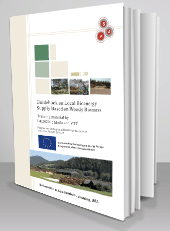Scientific & Academic Publishing
SAP is an open access publisher of journals covering a wide range of academic disciplines.
SAP is an open access publisher of journals covering a wide range of academic disciplines.

Description
This publication is part of the output of the PromoBio project(Promotion to Regional Bioenergy Initiatives – IEE/10/470/SI2.593725, www.promobio.eu) supported by the European Commission under the Intelligent Energy Europe Programme. The PromoBio project is coordinated by Metla, the Finnish Forest Research Institute. The other partners are the Technical Research Centre of Finland (VTT), BIOENERGY 2020+ GmbH (Austria), the Institute for Studies and Power Engineering (ISPE, Romania), the Centru Regional Development Agency (ADR Centru, Romania), the Polish National Energy Conservation Agency (KAPE) and the Slovak University of Agriculture in Nitra (UNIAG).
In 2008, the European Commission launched an action plan for the promotion of the use of energy from renewable sources (RES directive).
The objective is to reach 20% of the EU's energy consumption through renewable energy sources by 2020. Each member state has specific objectives. Poland, Romania, and Slovakia are the most recent new members of the EU. The objective of the three-year (2011– 2014) PromoBio project is to launch concrete project plans and to include entrepreneurs from the three target countries (Poland, Romania, and Slovakia) in the acquisition of woody biomass and investment in heating plants.
The best bioenergy practices and successful business models from partner countries Finland and Austria will be tested and transferred to the target regions of the project in Poland, Romania and Slovakia. The aim is to provide the local stakeholders with the grounds to make informed decisions about developing the bioenergy markets of their region. This guidebook is a concrete tool to provide basic information for the whole wood-based bioenergy process as applied to the local conditions.
Table of Contents
1. Introduction to PromoBio Project…………………………………………………………………………………………..1
2. Overview of Forestry, and Wood Fuel Supply Chains…………………………………………………………………..3
3. Combustion Technologies and Heating Systems…………………………………………………………………….....37
4. Investment Costs and Profitability of Biomass Heating Plants………………………………………………….......57
5. Business Models Covering the Entire Wood Heat Supply Chain……………………………………………………....75
6. Short Description of Situation in Wood Fuel and Biomass Heating Business in Each Pilot Region……………..113
REFERENCES………………………………………………………………………………………………………………………....135
Acronyms………………………………………………………………………………………………………………………….....143